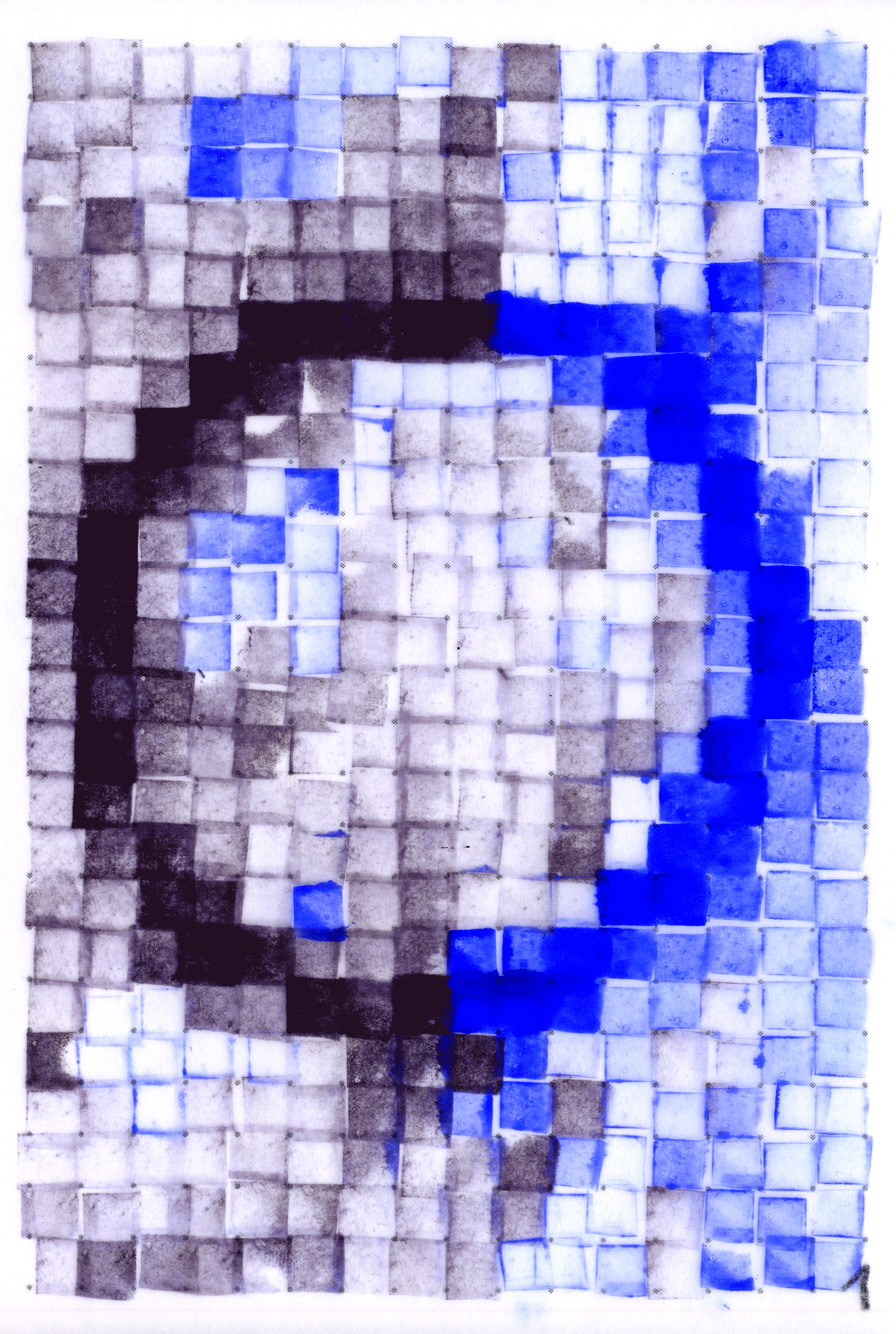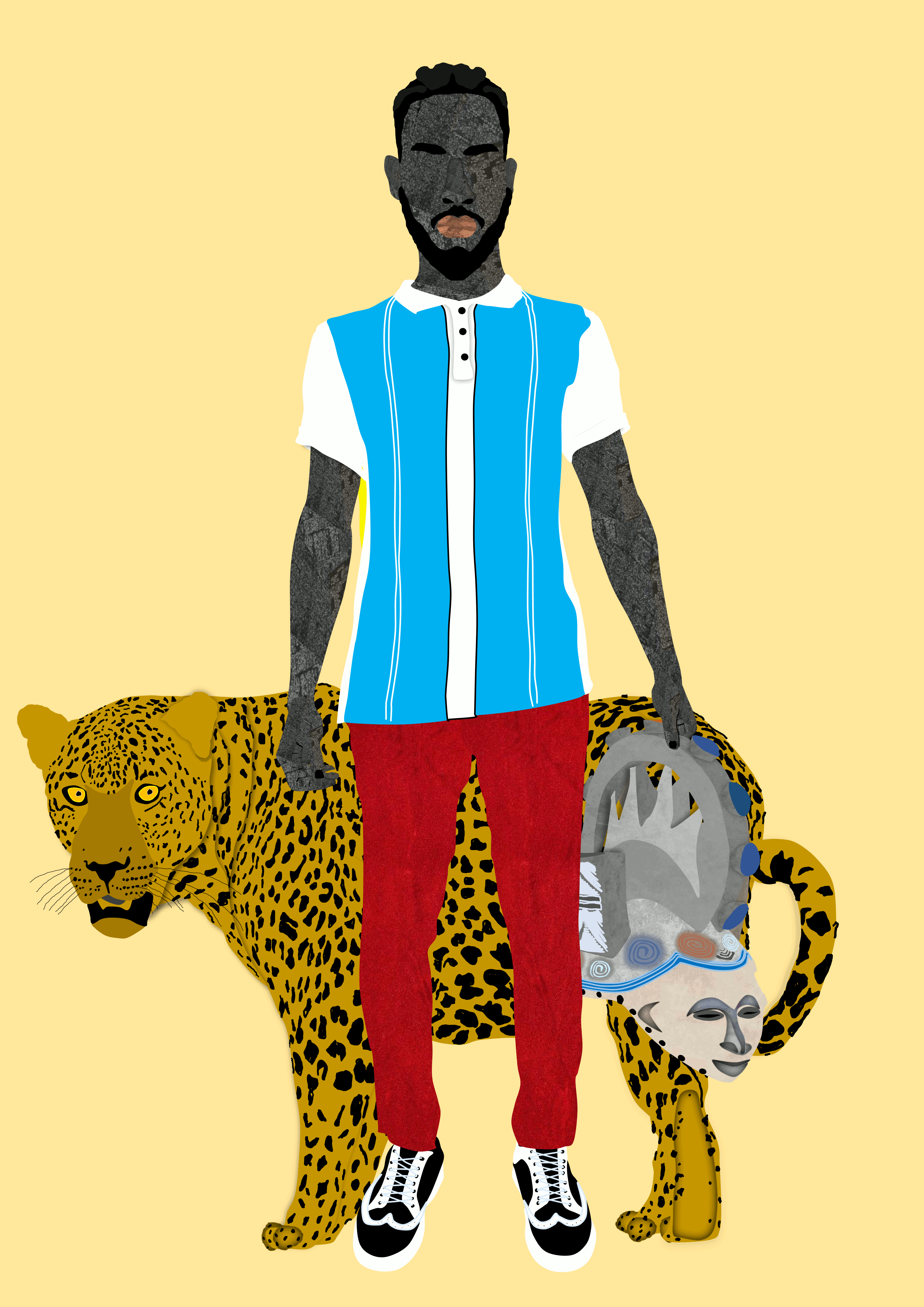As Janne fuses fragments of the physical and digital world together, Sarah Zucker, Mattia Cuttini and Matt Kane’s practices bring together creative tools and techniques of the two different dimensions. These artists are particularly interested in digital mediums and methods, presenting artworks that bridge between the analog and digital worlds.
Sarah Zucker’s practice makes use of both cutting-edge and obsolete technologies, mixing analog video feedback with digital video, minted on the blockchain. Originally captured in 2018, Space Loaf portrays a nostalgia for the early days of videography, placing the artist’s beloved cat in a glitchy suspended cosmos, as the cat curiously surveys her curious surroundings. Zucker’s playful video work is immediately relatable to an audience that has grown up around rapidly developing technologies and reflects her longstanding investigation of the digital medium.
In resonance to Zucker’s work across analog and digital mediums, Mattia Cuttini’s practice centers around the idea of how one thing changes into another, including how the physical can merge with the digital. Spinning Circle is an animated rubber stamped artwork created entirely by the artist, down to the rubber stamps and the manual process of stamping each individual block of colour, to the physical work’s digital transformation and animation. Although the work originates from the physical, the artist says, “the digital is the only real artwork, and the physical fragments are still frames to the animation. The physical pieces are like tools to create the final digital work.”

In a similar vein to Zucker and Cuttini’s fusion of the digital and the physical, Matt Kane draws from his experiences as an exhibiting painter to create intricate and layered patterns in M87 Black Hole Deconstruction #9. Kane is known for building custom software to create his signature vector digital art. He first conceived the idea of writing his own algorithms in 2005 and self-learnt programming skills to achieve this goal. Kane shares, “This desire to build my own software arose out of a promise I made myself when I was 19 – if I were ever to become a digital artist, I’d create my own software, the same way some painters grind their own pigments or stretch their own canvases.” In the creation of this artwork, the artist used an object tracking algorithm to follow a bright red sticker that was stuck on his forehead, while a camera captured the artist as he mediated through the tragic loss of a friend. Recording his movements and expressions as data, the artwork can be seen as a self-portrait, processed through the custom software that lies at the heart of his practice. Kane’s M87 Black Hole Deconstruction #9 builds upon the artist’s painterly expertise, while challenging the misconception that digital paintings may be impersonal or devoid of the artist’s hand.
Osinachi’s In Touch similarly offers a glimpse into the personal experiences of the artist, as the work pays tribute to the artist’s Igbo heritage. Osinachi says, “my work looks at personal experiences within a technological environment. I try to make sense of the experiences I have had growing up, as a Nigerian, as an African, and confront the challenges I see around me.” Reflecting upon his roots, Osinachi presents a contemporary man against the leopard, a highly respected symbol in Igbo culture and a representation of the challenges Igbos face in preserving their heritage, as understandings behind the Igbo word for leopards, Agu, are frequently thought to refer to lions, a confusion Osinachi believes arose from a difficult history of being colonized. Imprinting his culture and identity onto his artworks, Osinachi’s paintings elegantly demonstrate digital art’s capability of conveying emotional sophistication and honest storytelling, prompting collectors new to the world of digital art to take a closer look.

Despite the diversity of style and themes presented by the nine different works in “CryptOGs”, all of them demonstrate the evolving maturity of digital art and NFTs today, from artists who have been plugged into the crypto art conversation since its earlier days. While many of these works originate from and reference the crypto art community closely, they are also reflective of an important milestone in contemporary art histories, as methods and ways of making art continue to become more integrated with emerging technologies. From Miss Al Simpson’s virtual imagination of the Villa Borghese to Zucker’s merging of her IRL (in-real-life) cat with rainbow transmission waves, these artworks point to the continual flattening of the physical and digital worlds. “CryptOGs” is not only a celebration of pioneers within the NFT realm, but also an incisive look into the digital condition that you and I both inherit today, and will continue to push forward as we look into the future.




















